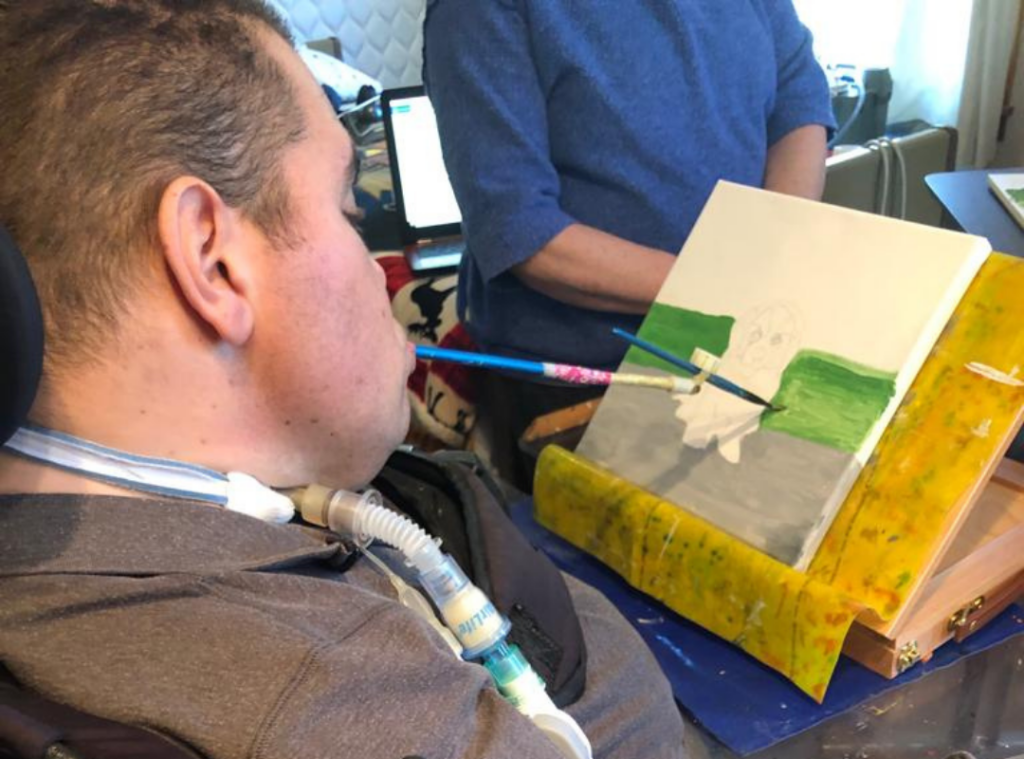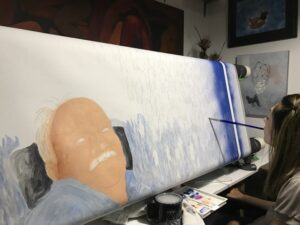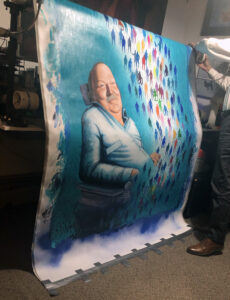
After a spinal cord injury, there are few environments where someone can express everything they’re feeling—grief, resilience, uncertainty, hope. For many, art and music offer that space. Whether it’s painting with a brush held in the mouth or writing a song that captures a moment too hard to say aloud, creative expression can make room for healing in ways that traditional rehabilitation can’t.

Craig H. Neilsen Foundation grantee partners are creating programs that reflect this truth. A young man from Mary Free Bed Rehabilitation Hospital who once felt withdrawn and disconnected found new motivation through mouth painting. Over time, he began opening up to staff and working more actively toward his therapy goals. “When he was discharged, he described himself as open, kind, and an artist.”
Music brought that same sense of reconnection to another patient, a 55-year-old man with tetraplegia who had always wanted to learn guitar. With the help of his therapist, he adapted chord shapes and focused on building fine motor skills and coordination. One of the most meaningful moments came when he played and sang “The Dance” by Garth Brooks alongside his daughter. This shared favorite became a turning point in both his therapy and personal connection with his daughter. Learning guitar not only supported his physical goals but it also gave him something lasting to carry forward into life beyond the hospital.

Other programs offer different entry points into creative connection. One initiative focused on accessible music technology that has opened new doors for participation. A motion-detecting app allows users to create music through subtle movements, while a retrofitted harmonica-style device offers a tactile option for those who prefer physical interaction. Others integrate songwriting, drumming, or digital composition into peer groups or one-on-one sessions. Whether someone is reconnecting with a longtime passion or discovering a new one, the process allows them the opportunity to direct the pace, the tone, and the story.
This kind of expression matters, especially since navigating changes in self-identity after injury can be complex. Creating art or music isn’t about escaping reality. It’s about finding ways to face it, shape it, and share it on one’s own terms. Participants often describe these experiences not as side projects or distractions, but as essential to how they’re making sense of their lives now.
In the landscape of spinal cord injury, progress is often measured in steps, reps, or milestones. But sometimes, it looks like a song. A painting. A conversation that didn’t seem possible a week before. These programs make space for that kind of growth—the kind that brings someone back to themselves.